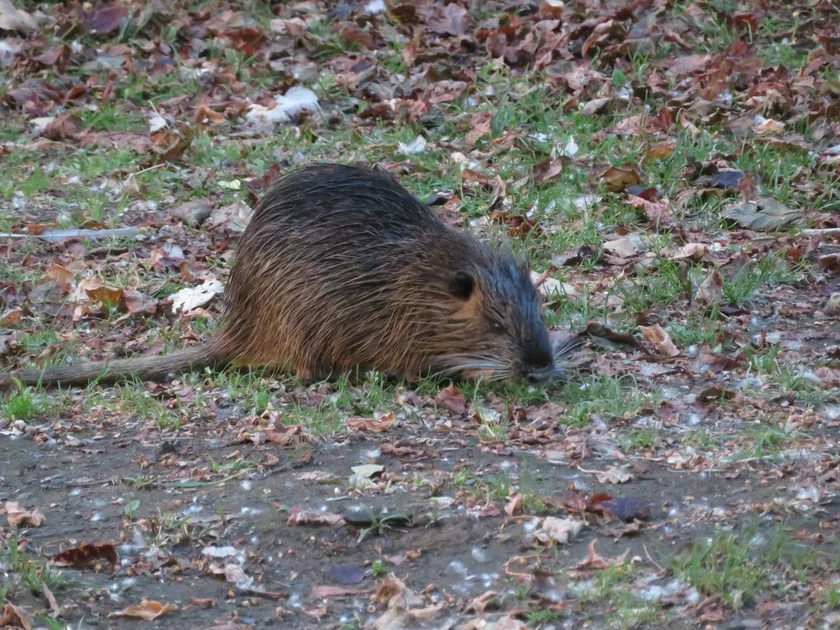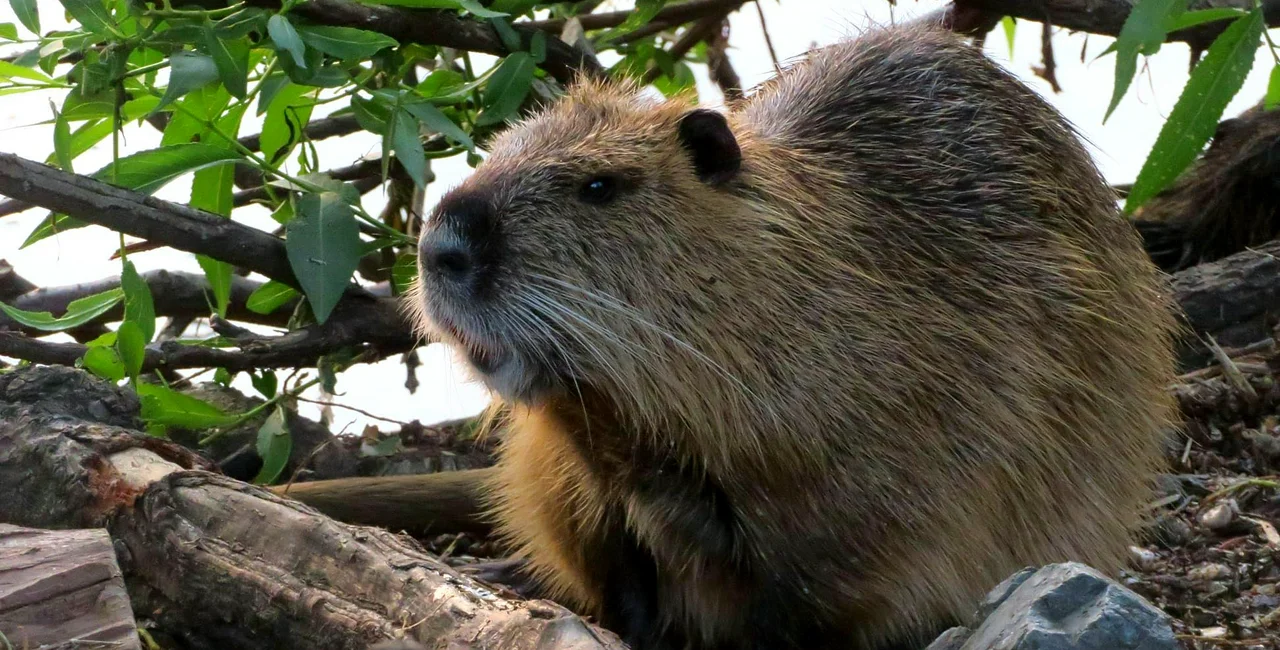In recent years, the population of nutria has exploded in Prague, and local wildlife experts are urging the public not to feed them. The cute water mammals, also known as copyu, can become aggressive and even bite humans who approach to feed them of take pictures. Due to the nutrias’ long front teeth, their bites can be very serious, and there is also a risk of disease.
Nutria can be found in large groups in the city center on the islands in the Vltava and along both banks of the waterfront, as well along urban streams like the Botič or Rokyta. The water mammals are not native to the Czech Republic, and have no natural enemies in the area.
They also often live with rats, and can spread diseases from rats such as leptospirosis to humans. Symptoms range from headaches and fevers to bleeding lungs and kidney failure. They also carry parasites that can cause skin disease referred to as “nutria itch.”
The population explosion of nutria is easy to explain.
“The reason is simple. They have absolutely ideal conditions in Prague – a favorable climate and plenty of food provided by the people of Prague themselves. However, their population is so overpopulated that Prague is beginning to regulate their numbers on its land.” Václav Nejman, head of the rescue station from the city forestry firm Lesy hl. m. Prahy (LHMP), told the tabloid Blesk.
A few years ago the largest nutria population was at the Rokytka and Botič streams, but the Department of the Environment has worked to significantly reduce numbers. “Currently, the biggest problems are around the Vltava. These lands are managed by the Vltava River Basin, so they have to regulate them,” Nejman said.
The Prague 8 district in February urged people not to feed them. They do not hibernate, and can be seen all year by the water.
“The Rokytka stream under Libeňský zámek is a popular home for several river nutria, also known as water rats and American river rats. People confuse them with beavers and go to feed them vegetables and sponge cakes. DO NOT DO IT‼ This rodent does not belong to our country, it is so-called non-native and has no natural enemies,” Prague 8 said.
Beavers are native to Bohemia, and are not considered a nuisance. Their presence in the city is rather rare, though, and they tend to avoid humans.
“With a large number of nutria, there is a risk that the animals will start to disturb the shores. In addition, nutria are carriers of disease, as are rats. Both of these species often live together and quickly learn audacity. While hundreds of thousands of rats live in the metropolis, there are hundreds of nutria. But it helps the nutria that people consider them cute animals and feed them,” the Prague 8 district said.
While the city has been making efforts to stabilize the shores of the Vltava river and the streams that feed it, the nutria dig burrows and also eat so much vegetation that the soil at the waterfront becomes unprotected. This contributes to erosion and works counter to flood control plans. It also robs other animals of vegetation used for protective cover, nests and food.
Prague 8 also quoted Nejman: "We often see mothers with children. They believe they are feeding nutria. But sometimes it's just one nutria surrounded by rats. So there are really bizarre situations.”
The captured nutria are either euthanized or given to zoos, where they serve as food for carnivores such as lynxes or foxes, according to Nejman. Some 250 nutria were euthanized in 2020.
Several recent attacks by nutria have been reported, including a man being bitten one on of the islands in the Vltava and a dog being attacked in the city of Most. People who are bitten should seek medical attention immediately.

Nutria are native to South America. They were imported to Europe for fur and for meat, though attempts to popularize nutria meat were unsuccessful. The animals were abandoned by investors once they saw the market for fur and meat had been greatly overestimated.
The mammals were introduced to the UK in 1929, but a large eradication effort has all but extirpated them with few sightings after 1989.
Nutria made it to Continental Europe in the 1930s and were in Czechoslovakia by the 1950s.
Across most of the world except for South America, nutrias are considered an invasive species. The Nutria meat, though, has caught on in some parts of the former Soviet Union such as Kyrgyzstan and Uzbekistan. It has also been embraced by hipsters in Moscow as a locally bred and sustainable food that is lean and low in cholesterol, with the flavor similar to turkey and pork.












 Reading time: 3 minutes
Reading time: 3 minutes 























